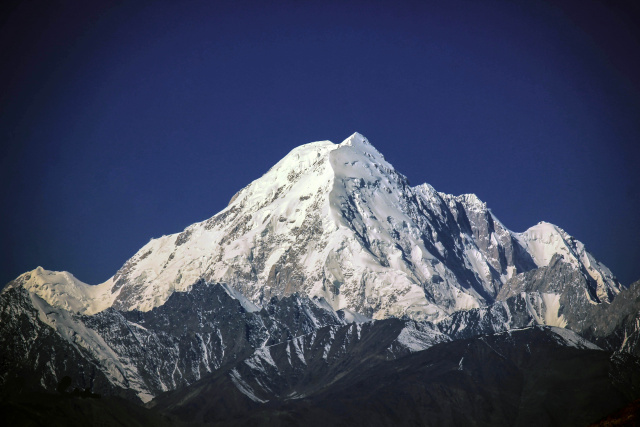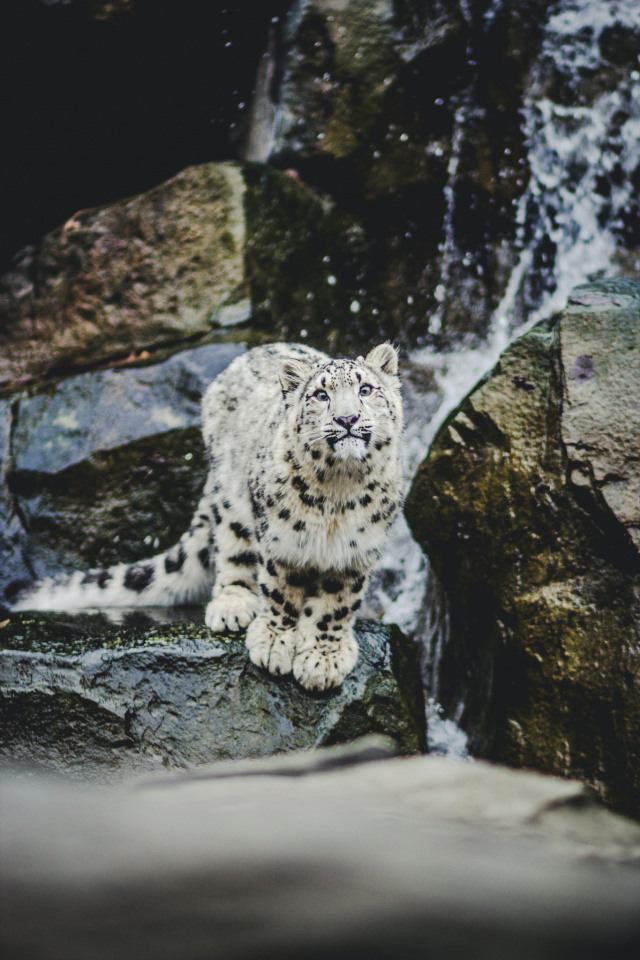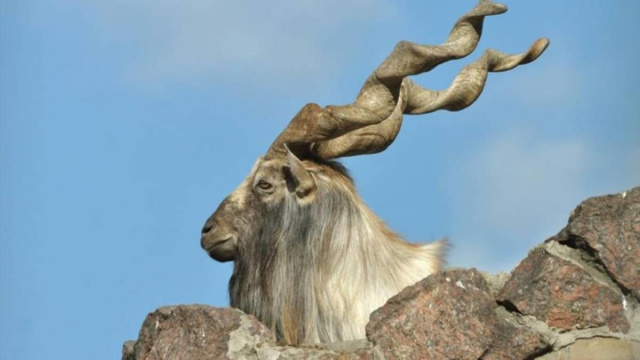Besides being an epicentre of mountaineering, interesting myths have surrounded the Tirich Mir peak for thousands of years. The people living under the shade of the mighty peak at the juncture of the south, central, west, and East Asia, have been exposed to ancient Iranic, proto-vedic, and Chinese cultural influences that intermingled with their indigenous values to evolve into fascinating folklores, folk stories, folk history, and folksongs that shaped a set of new socio-cultural belief system, and perception so peculiar to the region.
Fairies, phoenixes, pixies, giants, and other supernatural spirits feature in the folklores, folk stories, folksongs, and other socio-cultural aspects of the local life.

The water from the giant glaciers drains through the Roshgol and drops into the Atahk River at Zondrangram. Saraghrar, Langar Zom, Shakaur, Langura-e-Barfi, Nobaison Zom, Datti Zom, Mutrichili are some of the peaks in this valley.
Udren is the longest valley with the biggest glacier of the Hindukush area. The 7-thousander peaks along this valley include Istor-o-Nal, Shineik An, Durban Zom, Nowshaq, and Koh-e-Nadir Shah.
The Atahk valley stretches up to Concordia to the southwest - a junction where six glaciers come together. The Concordia has Nowshaq south face, Istoro Nal west faces, Asp-e-Safid 1 and 2, Gulasht Zom group of peaks, Tirich Mir main, and Tirich Mir West 1-4, Tirich Mir North and Dirgol Zom in its surrounding.

The suitable mountain ecology allows rich biodiversity including Himalayan Ibex (Capra Ibex), Snow Leopard (Uncia uncial), Brown Bear (Ursula arches), Himalayan Lynx (Lynx lynx isabellinus), Pallas Fishing Cat (Felis manual), Fox (Vulpes vulpes), Wolf (Canis lupus) and Jackal (Canis aureus).
The Hindukush region, by dint of its isolation from the rest of the country, has an ideal ecology to support unique natural biodiversity so peculiar to the region.
The avifauna of the area is unique and diverse. A total of 56 species of birds belonging to different categories such as insectivore, omnivores, carnivores, grantors, and herbivores are found in Chitral, northern Pakistan.
It has a variety of vegetation and plants such as Willow (Salix acmophylla), Salix tetrasperma, Himalayan Birch (Betula utilise), Poplar (Populus ciliate), and Sea Buck Thorn (Hippophae rhamnoides) besides many of the alpine flowers.

Chitral Museum, Chitral bazaar, Chitral Fort and Shahi Mosque are the points of fascination in Chitral town. Freestyle polo is played in Chitral town and Booni in Lower and Upper Chitral respectively, twice a week, which attracts huge crowds.
At Thoshi Game Reserve, near Chitral town, you will be able to see the markhor and wild goats coming down to the riverbank to drink water. It is the best example of a successful incentive-based community strategy to protect the population of markhor, wild goats, and the elusive snow leopard. The reputed BBC documentary - Snow Leopard Beyond Myth - was filmed here, in which the snow leopard was caught on camera for the first time to have hunted a markhor.
As you travel through the Tirich valley to the Tirich Mir basecamps, you will come across scores of small and big hamlets along the route.
Booni, with its cold orchards, varieties of fruits, peaceful environment, and hospital people, plus the village guesthouses, internet and access to public transportation for all the regions / valleys, has become an attractive tourist spot in recent years.
The cuisines of Chitral have a regional variance in contrast to many other cuisines of Pakistan. It is very similar to the cuisines in the neighbouring Gilgit Baltistan. Salty buttered tea, pilau rice, Troq chai, chicken karahi, mantu, chhira shapik, and ghalmandi are some of the traditional delicacies. Dried apricots, apricot and walnut kernel, and dried mulberries are the key components of the local dietary system.
Chitral's artisans manufacture a wide range of elegant and delicately crafted products, including pottery and jewellery; woodwork; and embroidered, woven and knitted textiles. Clay, wood, stone, bone, animal skin, and copper are the materials most commonly used. Chitral's wooden fabric, shu, (or Patti), embroidered cloth, and walnut furniture are popular handicraft throughout the country. The traditional Khow and Kalash clothing is made from wool and silk, decorated with beads and shells. The traditional Chitrali cap (pakol) and gown (chugha) are popular items in major cities throughout the country.
This article is an edited extract from a longer article published in Fascinating Pakistan, an e-magazine or hard copy magazine which can be found here

Shams Uddin
Besides being an epicentre of mountaineering, interesting myths have surrounded the Tirich Mir peak for thousands of years. The people living under the shade of the mighty peak at the juncture of the south, central, west, and East Asia, have been exposed to ancient Iranic, proto-vedic, and Chinese cultural influences that intermingled with their indigenous values to evolve into fascinating folklores, folk stories, folk history, and folksongs that shaped a set of new socio-cultural belief system, and perception so peculiar to the region.
Fairies, phoenixes, pixies, giants, and other supernatural spirits feature in the folklores, folk stories, folksongs, and other socio-cultural aspects of the local life.

The water from the giant glaciers drains through the Roshgol and drops into the Atahk River at Zondrangram. Saraghrar, Langar Zom, Shakaur, Langura-e-Barfi, Nobaison Zom, Datti Zom, Mutrichili are some of the peaks in this valley.
Udren is the longest valley with the biggest glacier of the Hindukush area. The 7-thousander peaks along this valley include Istor-o-Nal, Shineik An, Durban Zom, Nowshaq, and Koh-e-Nadir Shah.
The Atahk valley stretches up to Concordia to the southwest - a junction where six glaciers come together. The Concordia has Nowshaq south face, Istoro Nal west faces, Asp-e-Safid 1 and 2, Gulasht Zom group of peaks, Tirich Mir main, and Tirich Mir West 1-4, Tirich Mir North and Dirgol Zom in its surrounding.

The suitable mountain ecology allows rich biodiversity including Himalayan Ibex (Capra Ibex), Snow Leopard (Uncia uncial), Brown Bear (Ursula arches), Himalayan Lynx (Lynx lynx isabellinus), Pallas Fishing Cat (Felis manual), Fox (Vulpes vulpes), Wolf (Canis lupus) and Jackal (Canis aureus).
The Hindukush region, by dint of its isolation from the rest of the country, has an ideal ecology to support unique natural biodiversity so peculiar to the region.
The avifauna of the area is unique and diverse. A total of 56 species of birds belonging to different categories such as insectivore, omnivores, carnivores, grantors, and herbivores are found in Chitral, northern Pakistan.
It has a variety of vegetation and plants such as Willow (Salix acmophylla), Salix tetrasperma, Himalayan Birch (Betula utilise), Poplar (Populus ciliate), and Sea Buck Thorn (Hippophae rhamnoides) besides many of the alpine flowers.

Chitral Museum, Chitral bazaar, Chitral Fort and Shahi Mosque are the points of fascination in Chitral town. Freestyle polo is played in Chitral town and Booni in Lower and Upper Chitral respectively, twice a week, which attracts huge crowds.
At Thoshi Game Reserve, near Chitral town, you will be able to see the markhor and wild goats coming down to the riverbank to drink water. It is the best example of a successful incentive-based community strategy to protect the population of markhor, wild goats, and the elusive snow leopard. The reputed BBC documentary - Snow Leopard Beyond Myth - was filmed here, in which the snow leopard was caught on camera for the first time to have hunted a markhor.
As you travel through the Tirich valley to the Tirich Mir basecamps, you will come across scores of small and big hamlets along the route.
Booni, with its cold orchards, varieties of fruits, peaceful environment, and hospital people, plus the village guesthouses, internet and access to public transportation for all the regions / valleys, has become an attractive tourist spot in recent years.
The cuisines of Chitral have a regional variance in contrast to many other cuisines of Pakistan. It is very similar to the cuisines in the neighbouring Gilgit Baltistan. Salty buttered tea, pilau rice, Troq chai, chicken karahi, mantu, chhira shapik, and ghalmandi are some of the traditional delicacies. Dried apricots, apricot and walnut kernel, and dried mulberries are the key components of the local dietary system.
Chitral's artisans manufacture a wide range of elegant and delicately crafted products, including pottery and jewellery; woodwork; and embroidered, woven and knitted textiles. Clay, wood, stone, bone, animal skin, and copper are the materials most commonly used. Chitral's wooden fabric, shu, (or Patti), embroidered cloth, and walnut furniture are popular handicraft throughout the country. The traditional Khow and Kalash clothing is made from wool and silk, decorated with beads and shells. The traditional Chitrali cap (pakol) and gown (chugha) are popular items in major cities throughout the country.
This article is an edited extract from a longer article published in Fascinating Pakistan, an e-magazine or hard copy magazine which can be found here
You might like...

Birds of Gilgit-Baltistan

Golden Marmot: Social animals on the roof of the world

Qaqlasht Plateau

Seasons of the Chitral Valley
Newsletter
Sign up to keep in touch with articles, updates, events or news from Kuno, your platform for nature
